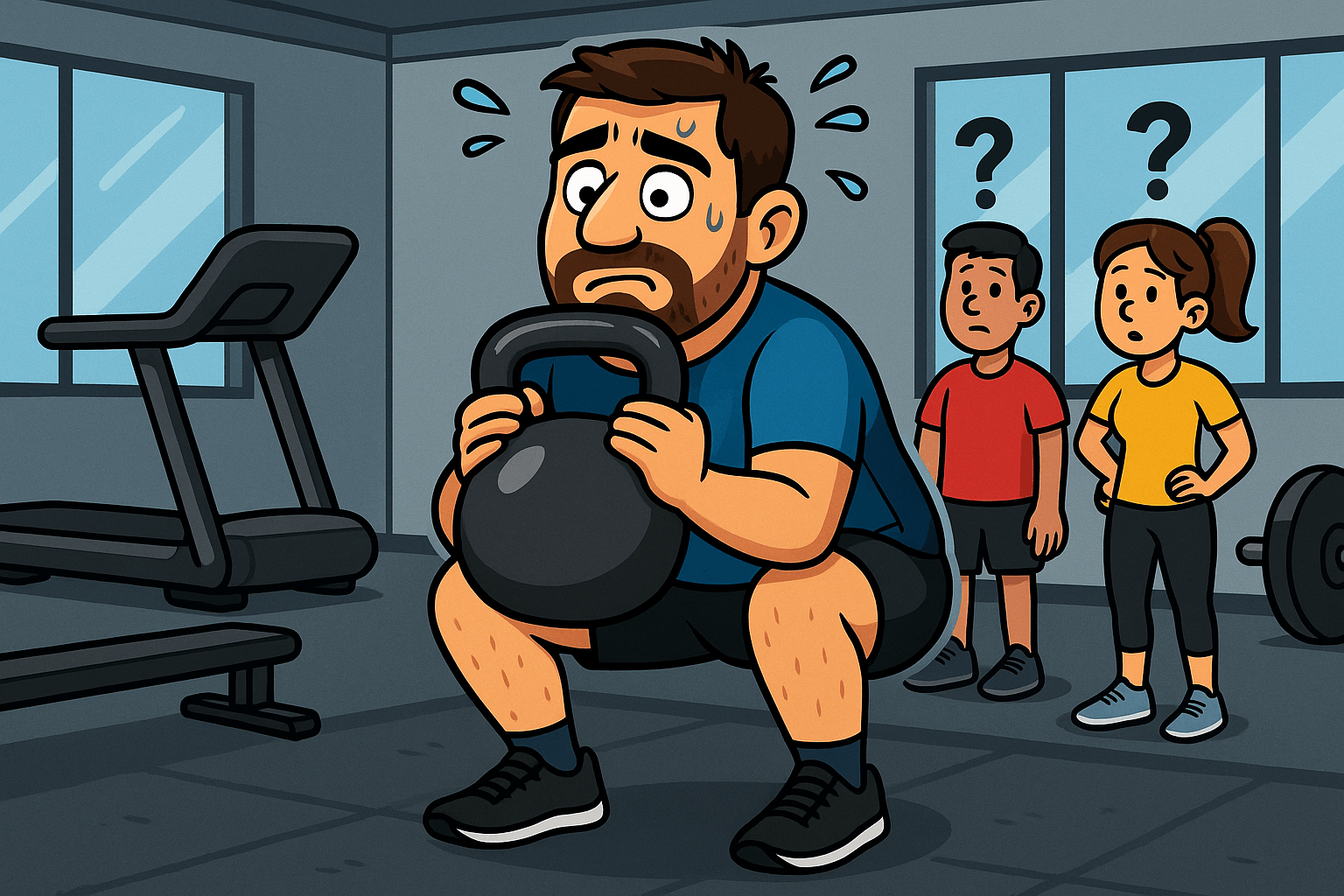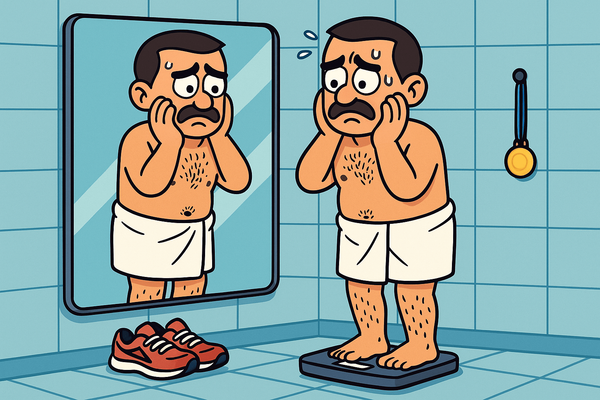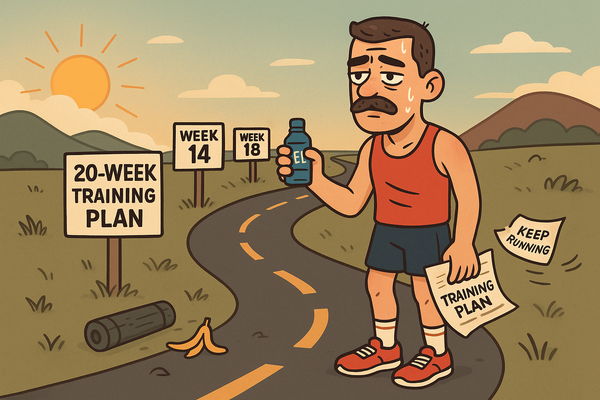Leg day for marathon training: the strength work runners actually need
Build strength, mobility, and flexibility to run stronger for longer. Discover the best leg day routine, plyometrics, and daily injury-prevention work for marathon training.

Marathon training isn’t just about stacking up miles until your legs beg for mercy. If you want to run faster, avoid injuries, and not end up hobbling like a baby giraffe after long runs, you need strength training that is compatible with your marathon training plan.
Why runners need strength training for marathons
One of the top reasons for injury is down to weakness. Keeping up with a strength routine can make the difference between making it through marathon training in one piece and weeks or months of recovery from a preventable injury and not even a medal to show for it.
A good strength routine will help you:
- Improve your running economy, engaging your biggest muscles like your glutes and your hamstrings means your body can take you much, much further rather than relying on your calves and hip flexors to do all the work.
- Prevent injuries. It’s not a complete fail-safe, your body is still a strange but wonderful thing, but a strong set of muscles will support your bones and ligaments and hopefully keep you from falling apart altogether.
- Reduce fatigue. By strengthening your entire body, you will have fallback muscles when you start fatiguing. If your glutes give in, you still have your quads who can power your run while your glutes get a moment of rest. It also means you can balance the load between your muscle groups, meaning you’re not putting all the strain on your calves.
Research consistently shows that adding strength training to a running plan improves running economy and endurance performance in both recreational and elite runners.
Best strength workouts for marathon runners
Heavy (ish) leg day in the gym
For me, this is the absolute top one to ensure a solid marathon training block. It can reduce ground contact time, improve force production, and delay fatigue, but with the caveat that it must be low volume to avoid soreness.
Plyometrics
Plyometrics train your muscles and tendons to store and release energy quickly. This “springiness” is known as leg stiffness, and it’s linked to running economy and reduced ground contact time. For marathoners, a little goes a long way: we’re not trying to become high jumpers, just improve stride efficiency and resilience.
Best plyometrics exercises for runners:
- Box jumps (low box, focus on power and controlled landings)
- Lateral jumps (quick feet, low height)
- Bounding strides (focusing on controlled landings)
- Skipping rope (short bursts, 30–60 seconds)
Keep total reps low (20–40 per session to start). Plyometrics can be combined with your heavy lifting session if you are short on time, but make sure to do them first, your legs need to be fresh to move explosively.
Daily Mobility & Prehab
Spend 5–10 minutes most days on a few basics: foam rolling, calf raises, glute activation, and stretching. It’s boring, but it works.
Reformer Pilates & Yoga
It might scream ‘posh lady in the suburbs in lululemon tights’, and I can guarantee you that they will be the main clientele, but both Reformer Pilates and Yoga are brilliant workouts to support your running with the holy trinity of strength, mobility and flexibility. Don’t get me wrong, some yoga can be insane with all the inversions and balances, but most teachers will give you options throughout the class. During marathon training, I’d recommend steering clear of the most advanced poses, even if you have mastered the pincha.
Yin yoga
I’m including this separately from yoga, because yin yoga is so different and can feel absolutely magical with the right teacher. Yin yoga is all about holding your stretches for minutes rather than seconds, you get into all the deep tissue and the relaxation level is a whole new level. Ideal before bed, if you can!
Runner’s leg day vs “normal” leg day
If you're a regular gym goer or if you’ve ever had a decent Personal Trainer, you’re probably familiar with a legs-push-pull split, a.k.a the bro split. It’s an excellent strength routine and my personal go-to, it involves heavy lifts and famously destroys your legs for several days after. For marathon training - that kind of strength training will absolutely ruin your training plan: good luck running intervals when you can barely keep the tears in trying to sit yourself down on the toilet.
During marathon training, I try to keep a legs-push-pull setup. I often merge push and pull into one session because I simply don’t have the time to do all three sessions, however, crucially, my leg day is significantly lighter than when I’m not marathon training.
To give you an idea of what level of reduction we’re talking: before starting my marathon training I would squat 80kg and deadlift 100kg, aiming for 8-12 reps. During marathon training, I’ve reduced my squats down to 60kg and deadlifts have been replaced with single leg deadlifts with a 24kg kettlebell.
A solid leg day during marathon training should be 60-70% of your 1 rep max, and you should finish with 2-3 reps left in the tank. In other words: this is not the time to be chasing failure. Leg day now means walking up the stairs two at a time thinking “I don’t think I went hard enough”, because we all know that the day after will hurt a lot more.
How to fit strength training into your marathon plan
The answer is compromise. If you work full time and you’re serious about marathon training, then I suggest you quit your job. Or go part time.
Of course, for most of us, we still have bills to pay and we don’t have lucrative sponsorships to see us through our training, which means we have to compromise in another way. The compromise will look different to everyone, but in an ideal world, your week should include at least:
- 1x leg day
- 1x yoga or reformer pilates
- 1x yin yoga
If you add that on top of 4 runs/week, that’s 7 workouts, so you’ll need to double up at least one day to ensure you get a rest day.
My current compromise: I’ve cut out one easy run each week, running three times instead of four. All my runs are fairly intense and include speed work, and I get around by cycling everywhere to make up for the “lost” run. So far it’s working well, but we’re still many weeks away from race day.
Common strength training mistakes marathoners make
Not strength training at all
Skipping strength work entirely is like trying to build a house on sand - eventually something’s going to sink or crack. Strength training improves your running economy and reduces your risk of overuse injuries. Even 1 short session per week can make a huge difference.
Going too hard on leg day
Yes, you can squat until you can’t feel your quads, but don’t expect to run well the next day. The goal is to build resilience, not destroy your legs.
Skipping mobility work
Mobility work keeps joints moving well and muscles firing correctly, reducing injury risk. Yin yoga, foam rolling, and dynamic stretches all count.
Not adjusting weights during peak mileage weeks
Your body can only adapt to so much at once. In peak mileage weeks, scale the weights back even further, or drop a set to avoid digging a recovery hole you can’t climb out of before race day.
Best leg day exercises for marathon runners with lifting experience
This is my personal go-to for marathon training (I also use this during half marathon training). It covers the best leg exercises for runners and hits all your main muscle groups. The goal is to get through the session without shaky legs or a pulled hamstring. No ego-lifting!
Best leg day exercises for marathon runners without lifting experience
If you’ve already started your marathon training plan and looking to add strength: go easy. Going straight in for back squats without proper form is asking for an injury: instead start with just body weight until you are comfortable with the movements. Once you're comfortable, go for goblet squats over back squats and stick to very low weights. It is very easy to go too heavy when you first start out!
You can also replace the single leg deadlifts with kickback Romanian deadlifts until you've built up better strength and balance to complete a full single leg deadlift
If it's financially an option, consider getting a personal trainer to teach you compound lifts and help you on your journey to heavy lifting. It will help you for future races.
Will strength training make my marathon easy?
Strength work won’t make the marathon easy - nothing will - but it will make you better prepared to handle it. You’ll move more efficiently, stay stronger for longer, and give yourself a fighting chance in those final miles.





